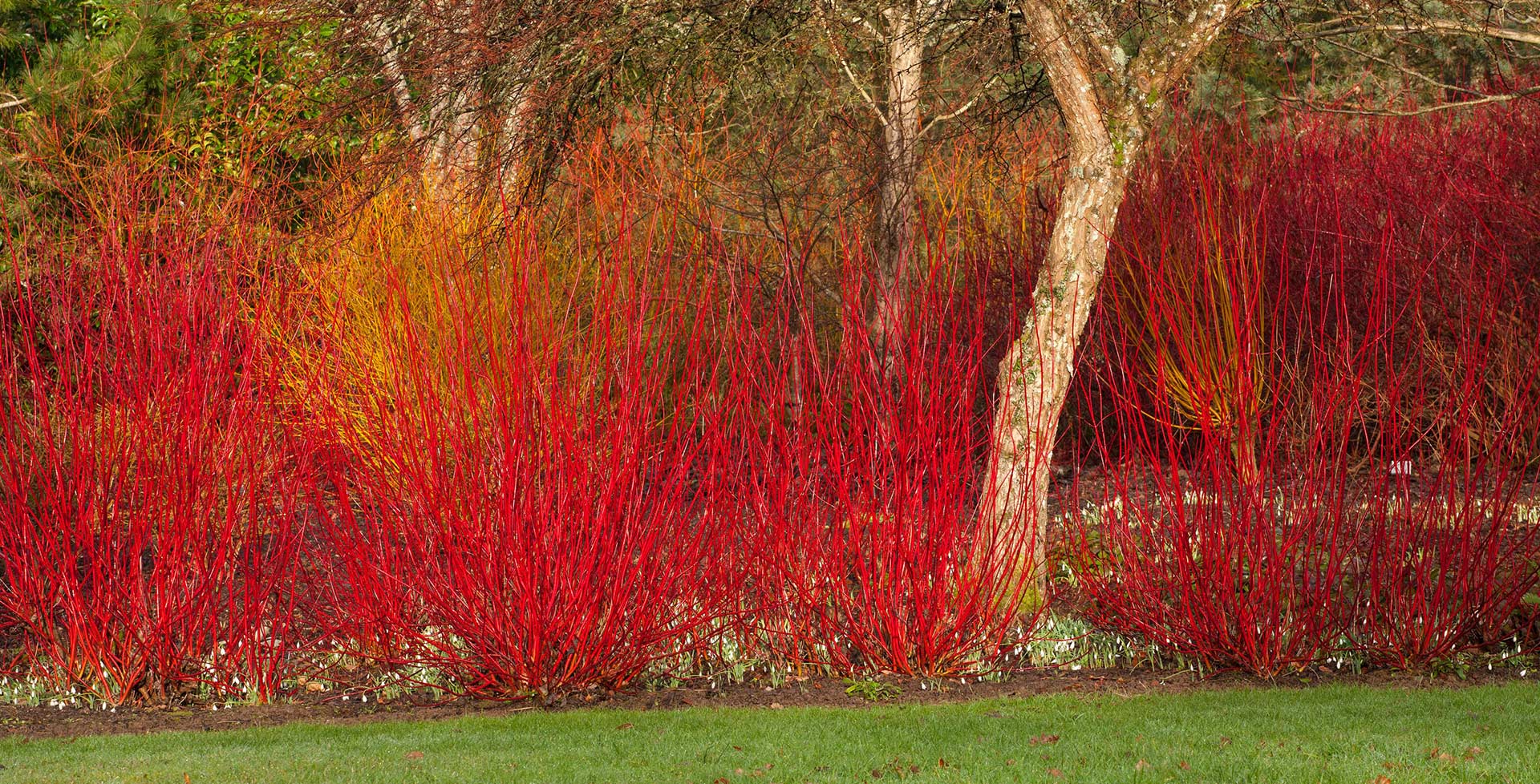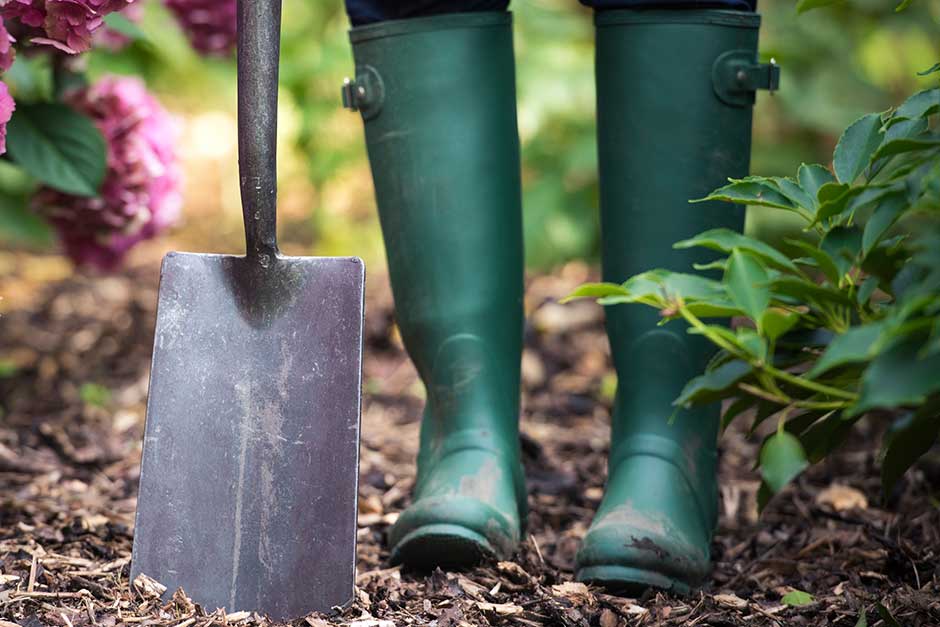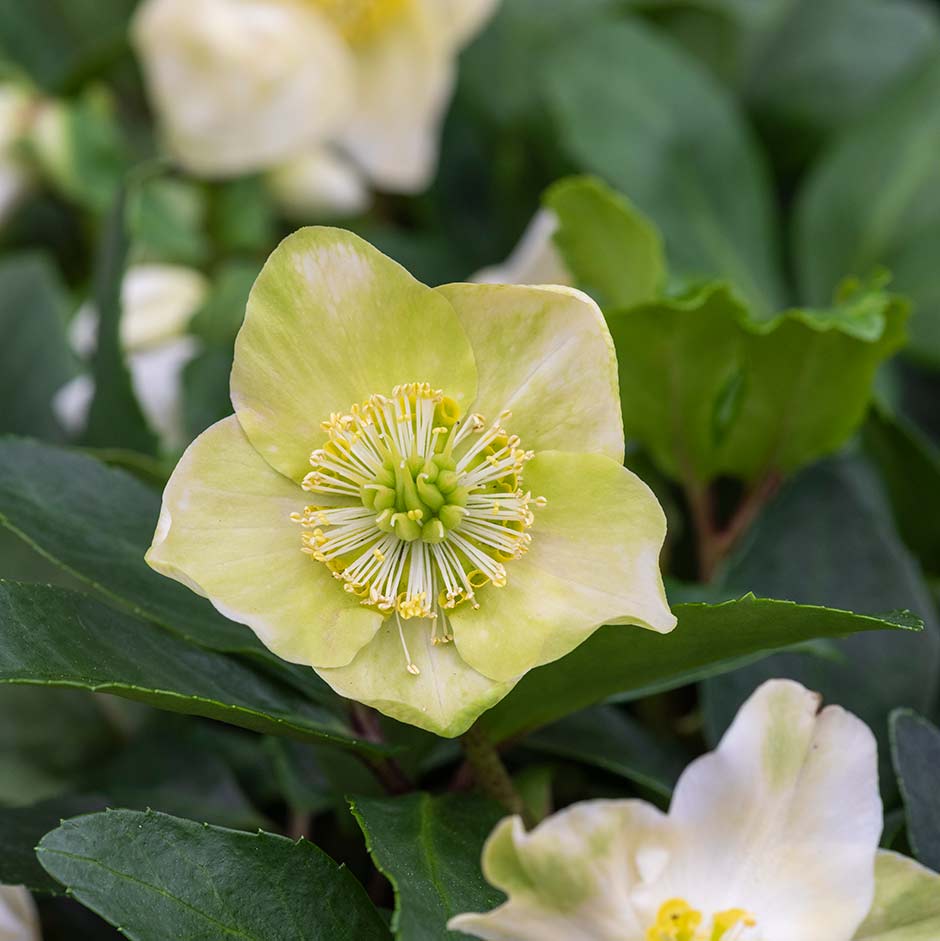
Introducing...
Winter stem colour dogwood
Botanical name: Cornus
Some dogwoods have colourful young stems and can be pruned annually (‘coppiced’) to make the most of this feature. They are regularly planted in winter gardens en-masse alongside early bulbs to create a stunning display. Excellent for adding height and colour to winter containers and for brightening up floral displays.
Looks
Once the leaves have fallen in autumn, their true glory is the bright red, orange, yellow or acid green stems. These are often cut to the ground in spring, leaving just small woody stumps. Then, as the season progresses, new whippy growth is sent skywards creating a dense thicket of stems and leaves, reaching a height of around 1.2m (4ft). Unpruned, stems are topped off with white, flat flower plates in early summer.
Likes
These dogwoods can grow in any soil, but preferably reliably moist to promote growth. The stems colour best in full sun.
Dislikes
They will not grow well in extremely dry soil or in deep shade.
Did you know?
To get the best winter stem colour, you’ll need to cut off all of the stems (coppice) annually in early spring, about 5cm (2in) above ground level. Over time the base will form a permanent low framework known as a stool.
Growing guide

How to grow cornus for stem colour
All the information you’ll need to grow & care for cornus in your garden.
Cornus we recommend for stem colour
Cornus alba 'Elegantissima' (v)
red-barked dogwood 'Elegantissima'
- 2.5–4 metres
- 2.5–4 metres
Cornus sanguinea 'Anny's Winter Orange'
dogwood 'Anny's Winter Orange'
- 1.5–2.5 metres
- 1.5–2.5 metres
Cornus alba 'Spaethii' (v)
red-barked dogwood 'Spaethii'
- 2.5–4 metres
- 2.5–4 metres
Cornus alba 'Elegantissima' (v)
red-barked dogwood 'Elegantissima'
- 2.5–4 metres
- 2.5–4 metres
Cornus sanguinea 'Anny's Winter Orange'
dogwood 'Anny's Winter Orange'
- 1.5–2.5 metres
- 1.5–2.5 metres
Cornus alba 'Spaethii' (v)
red-barked dogwood 'Spaethii'
- 2.5–4 metres
- 2.5–4 metres
Useful advice

Plants for winter interest

Wildlife: helping through winter
Get involved
The RHS is the UK’s gardening charity, helping people and plants to grow - nurturing a healthier, happier world, one person and one plant at a time.